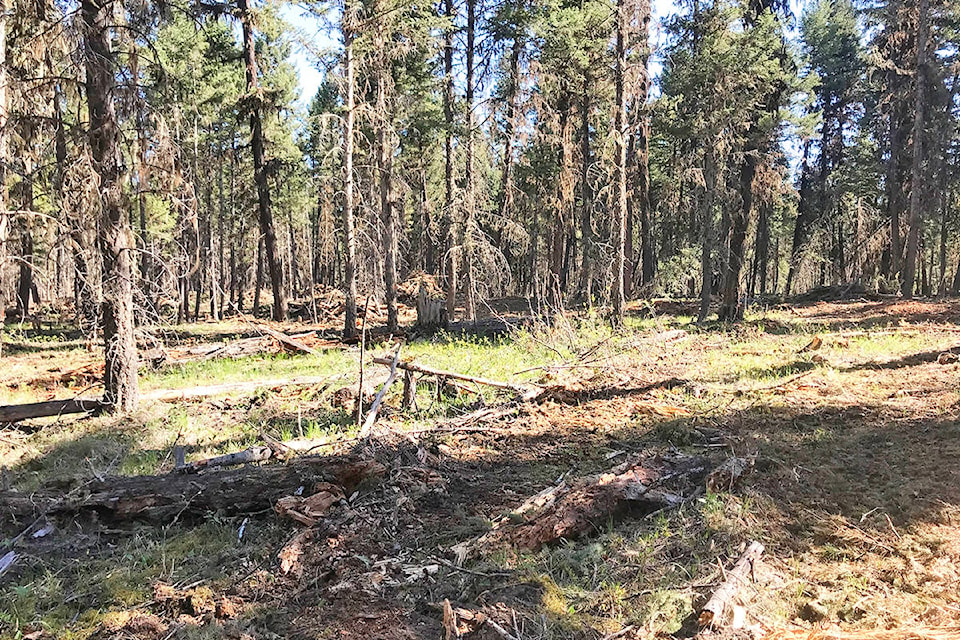A three-year project to create a 300-metre wide by nine-kilometre fuel break on the west side of the power line in the Williams Lake Community Forest Esler block is almost done.
“It runs from Highway 20 down to just above Williams Lake Creek,” said Kent Watson, one of the forest’s managers. “We are in the stages of wrapping that up and will be completed, hopefully by the fall.”
Work has involved under-story removal and thinning of the over-story.
“We also have the Potato Mountain block and around the Big Lake School where we are doing an interface treatment project.”
The majority of the mechanical work was done by Skywest Environmental, while Borland Creek Logging and Alkali Resource Management have been doing the hand treatment.
“Currently crews haven’t been working because of fire hazards and most of those crews have been working on fires,” Watson said.
Woody debris resulting from the mechanical treatment has been ground on site mostly by Tsideldel Biomass and delivered to Atlantic Power Corporation or Pinnacle Renewable Energy Inc.
Watson said with additional funding, they will be completing some resiliency treatments on some stands that were damaged by dense under-story, snow and ice.
“It will be thinned for mule deer winter range to leave it as more resilient to fire behaviour as well as increasing biodiversity as well as some other values and reduce the fire hazard.”
The project was funded 100 per cent by Forest Enhancement Society of B.C.
Operations manager Dave Conley said FESBC has funded several similar projects that incorporate recreation values in and around Williams Lake.
“The Flat Rock area is Douglas-fir forest which has over the years overgrown,” Conley said. “I think over the last 100 or so years a lot of those forests have grown up with understory really thickly and that’s starving those larger trees for nutrients and moisture, particularly as we are exposed to more and more impacts of climate change.”
By reducing the density, and removing the fuels, all of the recreation elements as well as the forest itself is less prone to wildfire, he added.
“In particular those projects had to accommodate the trail networks which feature prominently in that area.”
Conley was living in Williams Lake in 2010 when the Meldrum Creek wildfire was a potential threat and Williams Lake was on evacuation alert, which was compounded when the 2017 wildfires resulted in the Williams Lake area on evacuation order.
“I’m proud to be involved with funding the community forest projects. It was in 2017 when they first applied to us for funding and we’ve been actually funding their projects ever since.”
Conley said the province needs to continue funding fuel management projects.
“It’s becoming more and more important as we go through fire seasons like this one.”
READ MORE: Wildfire reduction work slated near Williams Lake Airport
READ MORE: Cariboo communities receive $500K for wildfire prevention
news@wltribune.com
Like us on Facebook and follow us on Twitter
